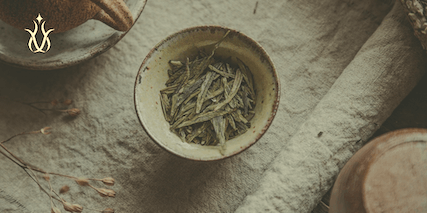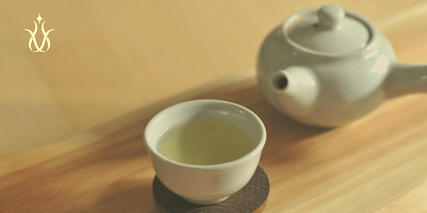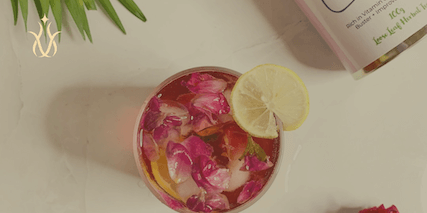Discover the world of green tea with our comprehensive guide to the best green tea brands. Explore the top-rated brands that offer exceptional quality and taste, from traditional classics to unique blends. Find your perfect cup of green tea today.
Introduction
For centuries, green tea leaves have been cherished not only for their delightful flavour but also for their myriad of health benefits. As the popularity of green tea consumption continues to surge, it’s become increasingly important to select a brand that prioritises quality, sustainability, and of course, exceptional taste. Let’s embark on an exciting journey to explore some of the best green tea brands that you can trust.
Understanding Green Tea
Originating from China over 4,000 years ago, green tea has seeped its way into the cultural fabric of many societies, particularly in East Asia. Today, its refreshing taste and health properties have gained global recognition. The three common types of green tea leaves you might come across include Sencha, the most popular variety in Japan; Matcha, a green tea powder renowned for its vibrant colour and rich taste; and Bancha, known for its robust flavour and lower caffeine content.
While the health benefits of green tea are well-documented, it’s essential to recognise these can vary depending on the type of green tea. A study in the Journal of Nutrition found green tea may support cardiovascular health, aid weight management, and even offer potential cancer-preventive properties.
Nutritional Profile of Different Green Tea Types
Each type of green tea offers a unique nutritional profile.
Sencha tea, for instance, is known for its high concentration of catechins, a type of potent antioxidant. A study in the Journal of Chromatography A found Sencha to be particularly rich in epigallocatechin gallate (EGCG), a catechin associated with numerous health benefits, from heart health to weight loss.
Matcha, on the other hand, is unique as the entire tea leaf is consumed as a green tea powder, providing a broader range of nutrients. It’s also particularly high in theanine, an amino acid that promotes relaxation and reduces stress levels.
Bancha, though lower in catechins than Sencha, has a higher content of other nutrients like calcium and iron, which contribute to bone health and oxygen transport, respectively.
When choosing between these types of green tea, consider the nutritional differences alongside your personal health goals and flavour preferences.

Factors to Consider When Choosing Green Tea
Choosing the best green teas goes beyond just the taste. Factors such as organic sourcing, fair trade practices, the form of tea (loose leaf, tea bags, capsules), and even the brewing technique can significantly impact the quality of your tea and, ultimately, its health benefits.
The Importance of Organic and Fair Trade Green Tea
Organic and fair trade practices play a critical role in ensuring both the quality of your tea and the sustainability of its production.
Organic green tea is grown without synthetic fertilisers or pesticides, reducing your exposure to potentially harmful chemicals and supporting soil health and biodiversity. A study in the Journal of the Science of Food and Agriculture found organic teas to have higher concentrations of beneficial compounds such as catechins and flavonoids, lending credence to the idea that organic cultivation can enhance tea’s nutritional value.
Fairtrade practices, on the other hand, ensure that tea growers and workers are paid fairly, promoting better working conditions and sustainable farming practices. Opting for fair trade tea supports these ethical practices, making your tea-drinking experience that much more satisfying.
Loose Leaf vs Tea Bags vs Capsules
When it comes to the form of tea, the choice between loose-leaf, tea bags, and capsules can impact both your tea’s quality and the convenience of brewing.
Loose-leaf tea often provides the best quality and flavour as the leaves can fully expand during brewing, allowing all the flavours and beneficial compounds to infuse the water. This form typically features larger, whole leaves, which retain their beneficial compounds better than smaller, broken pieces found in some tea bags.
Tea bags offer convenience and consistency. However, they can sometimes contain lower-quality tea or tea dust, resulting in a less vibrant flavour and lower concentration of beneficial compounds.
Capsules, typically used in tea extract form, offer a quick and convenient way to get the benefits of green tea. However, they miss out on the sensory pleasure of brewing and sipping tea. Furthermore, the beneficial compounds in capsules can vary depending on the extraction process and the quality of the original tea used.
In conclusion, while convenience is a factor for the most authentic and healthful experience, loose-leaf tea often comes out on top.

Review of the Best Green Tea Brands
Now that we understand what to look for in quality green tea let’s take a closer look at some of the leading brands that have made a mark in the green tea market.
Clipper Organic Green Tea
As the first tea brand in the UK to carry the Fairtrade mark, Clipper is known for its ethical sourcing and quality products. Their organic premium green tea is no exception. Grown using only natural methods, the tea leaves are unbleached and contain no artificial ingredients, delivering a smooth and light flavour that’s packed with antioxidants. The packaging is entirely plastic-free and recyclable, reinforcing Clipper’s commitment to the environment.
Pukka Supreme Matcha Green Tea
Pukka combines the highest quality organic Sencha, Pin Ho Wild Jade, and Indian Green Tea, along with Matcha green tea powder, to create their Supreme Matcha Green Tea blend. This combination offers a well-rounded flavour and a higher concentration of antioxidants. Pukka is also fair trade certified and strongly emphasises sustainable and ethical sourcing.
Twinings Pure Green Tea
One of the oldest and most trusted brands in the UK, Twinings offers an array of high quality green tea varieties, including Pure Green Tea. This blend is known for its delicate flavour and light golden colour. The tea leaves are carefully selected and sourced from China, where they follow strict quality standards. While not organic, Twinings is Rainforest Alliance certified, ensuring sustainable farming practices.
Teapigs Mao Feng Green Tea
Teapigs is renowned for its premium quality tea. Their Mao Feng Green Tea uses whole leaves, allowing the full flavour and health benefits to infuse into your cup. The green tea bags are also biodegradable, demonstrating Teapigs’ commitment to sustainability.
Clearspring Organic Japanese Sencha
For a taste of authentic Japanese green tea, Clearspring is a go-to brand. Their Organic Japanese Sencha is sourced directly from expert tea producers in Japan. This organic, vegan-friendly green tea is lauded for its fresh and vibrant flavour.
While all these brands have their unique strengths, it’s worth remembering that the ‘best’ green tea ultimately depends on your individual taste and values.
The Impact of Brewing Techniques on Green Tea Quality
Before you dive into your favourite cup of green tea, it’s crucial to understand the impact of brewing techniques. The way you brew your tea can significantly influence both the flavour and nutritional content.
Firstly, temperature matters. Green tea is best brewed with hot water but not boiling water. A temperature of about 80°C is ideal. This is because boiling water can scorch the leaves, leading to a bitter taste and potentially destroying some of the beneficial compounds. For instance, matcha tea from Pukka or Clearspring’s Organic Japanese Sencha would benefit from this careful temperature control.
Secondly, steeping time is also critical. A steeping time of 1-2 minutes is typically recommended for the perfect green tea. Over-steeping can lead to an overly strong or bitter flavour, while under-steeping may not fully extract the flavours and nutrients. For example, Teapigs Mao Feng Green Tea suggests a steeping time of 3 minutes per tea bag for the perfect balance of taste and nutrition.
Price Comparison Among Top Green Tea Brands
The price of green tea can vary greatly depending on several factors, including the brand, the quality and type of the tea leaves, sourcing practices, and whether it’s organic or fair trade.
Let’s take a look at the price comparison among our top picks:
Clipper Organic Green Tea tends to be on the more affordable end of the spectrum, reflecting its commitment to accessible, ethically sourced teas.
Pukka Supreme Matcha Green Tea is a bit more expensive due to the inclusion of high-quality matcha powder and the blend of different teas.
Twinings Pure Green Tea offers great value for its price, considering the brand’s reputation for quality.
Teapigs Mao Feng Green Tea is pricier, reflecting the brand’s focus on premium, loose leaf teas.
Clearspring Organic Japanese Sencha is also more expensive, given its direct sourcing from Japan and adherence to organic farming practices.
Remember, while price is an important factor, it shouldn’t be the only consideration when choosing your green tea. Quality, taste, and ethical sourcing practices are equally, if not more, important.
Conclusion
Well, there you have it – a detailed dive into the world of green tea brands, from the key factors to consider when choosing your perfect brew to a comparison of some of the top green tea brands.
Remember, when selecting a green tea brand, it’s crucial to consider factors like the tea’s nutritional profile, the brand’s commitment to organic and fair trade practices, and the packaging type (loose leaf, tea bags, or capsules). We’ve seen how brands like Pukka, Teapigs, and Clearspring offer unique blends and high-quality teas that cater to different tastes and preferences.
When it comes to brewing, a bit of finesse goes a long way. Using the correct water temperature and steeping time can maximise the health benefits and the enjoyment of your green tea. So, whether you’re a Clipper Organic devotee or a Twinings Pure Green fan, remember to brew with care.
Frequently Asked Questions
Which green tea brand offers the best value for money?
Twinings Pure Green Tea is a great choice for those looking for quality at an affordable price. However, remember that value is not just about cost but also about the quality and ethical sourcing of the tea.
How can I brew my green tea to get the most benefits?
Use hot, but not boiling, water (around 80°C) and steep for 1-2 minutes. The exact brewing instructions can vary, so it’s best to follow the recommendations on the tea’s packaging.
Does the type of green tea (e.g., Sencha, Matcha, Bancha) affect its health benefits?
Yes, different types of green tea can vary in their nutritional profile and the level of certain compounds, like antioxidants. However, all green tea types offer a range of health benefits.
Why should I choose organic and fair-trade green tea?
Organic and fair trade teas are grown without harmful pesticides and guarantee fair wages and safe working conditions for workers. They also often have higher nutritional profiles and contribute to sustainable farming practices.
What’s the difference between loose leaf, tea bags, and capsules?
Loose leaf teas generally offer a fresher, richer flavour and higher nutritional content but require a bit more preparation. Tea bags are convenient and easy to use. Capsules, typically used in tea-making machines, offer convenience but may not offer the full health benefits and flavour of loose-leaf or green tea bags.
Can I drink too much green tea?
Yes, while green tea has many health benefits, excessive consumption (typically more than five cups a day) can lead to side effects, primarily due to its caffeine content. Always enjoy in moderation!
Resources:
National Center for Complementary and Integrative Health (2020). Green Tea. Available at: https://www.nccih.nih.gov/health
Disclaimer: This article is for informational purposes only and should not replace professional medical advice. If you have specific concerns or medical conditions, it is recommended that you consult with a healthcare professional for personalised guidance and support.
Related Topics:
The Benefits of Drinking Herbal Teas
The Incredible Health Benefits of Kombucha
Top 10 Anti-Aging Foods to Include in Your Diet






